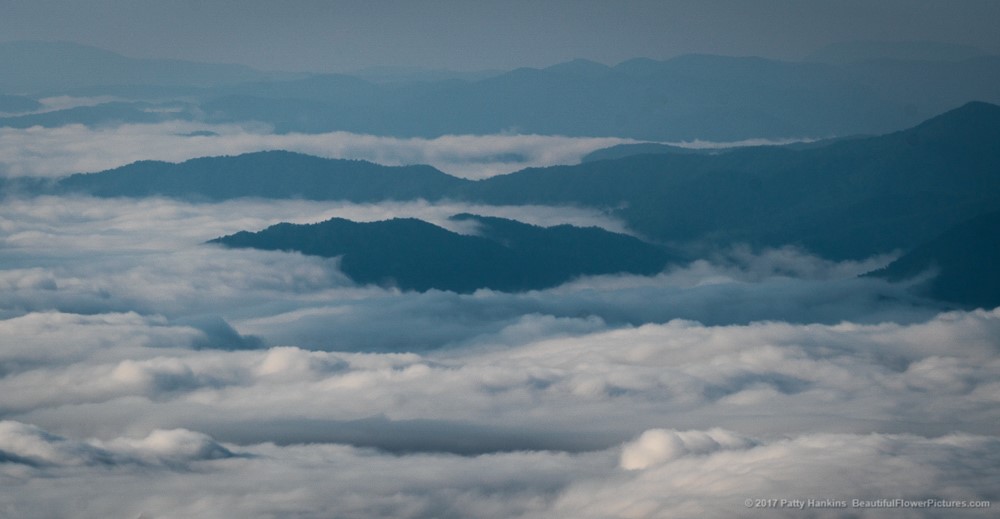
by hankinslawrenceimages | Jul 17, 2017 | Tennessee, Virginia
Usually when I’m photographing in the Great Smoky Mountains National Park or along the Blue Ridge Parkway I’m photographing wildflowers. On my most recent trip I spent much more time creating landscape photographs than flower photographs. One of the subjects that repeatedly caught my eye was the idea of mountains and clouds. I thought I’d share some of my quick edits of photos I did on the road of mountains and clouds with you today.

Mountains and Clouds at Woolyback Overlook © 2017 Patty Hankins
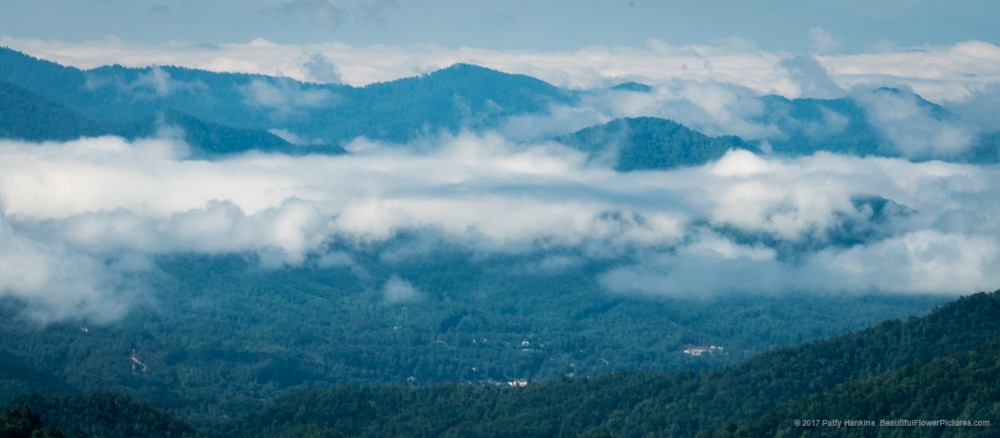
Mountains and Clouds in the Smokies © 2017 Patty Hankins
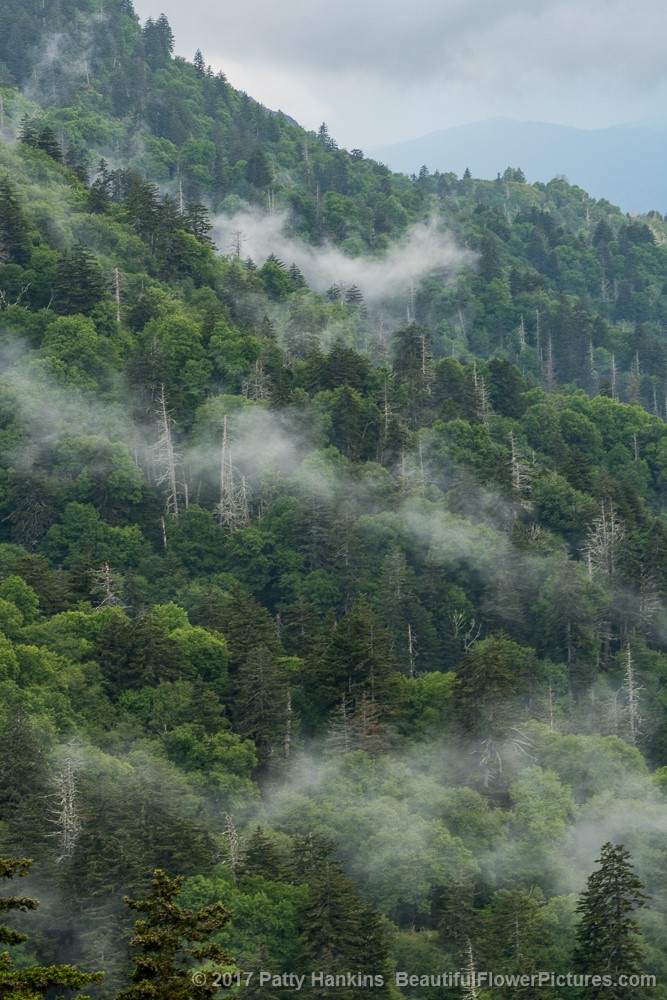
Mountains and Clouds in the Smokies © 2017 Patty Hankins

Mountains and Clouds at Clingman’s Dome © 2017 Patty Hankins
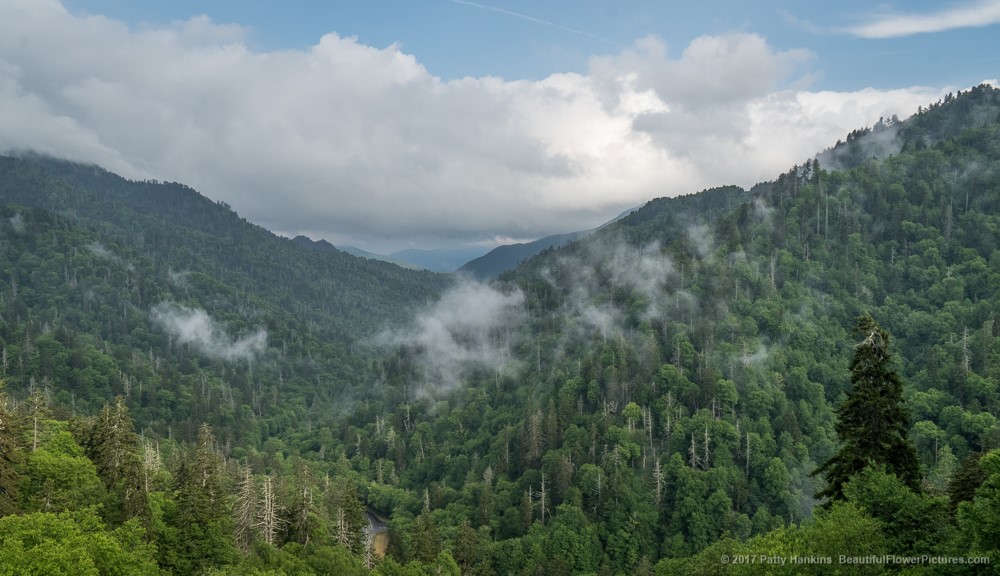
Mountains and Clouds in the Smokies © 2017 Patty Hankins
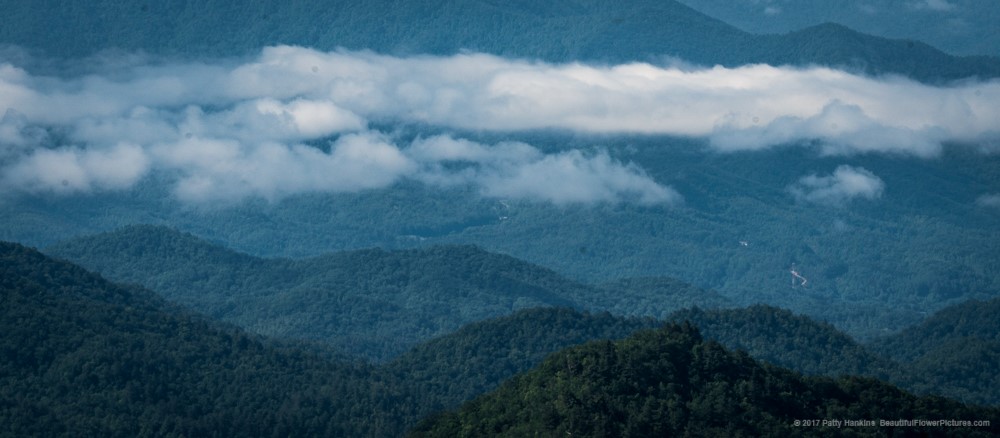
Mountains and Clouds in the Smokies © 2017 Patty Hankins
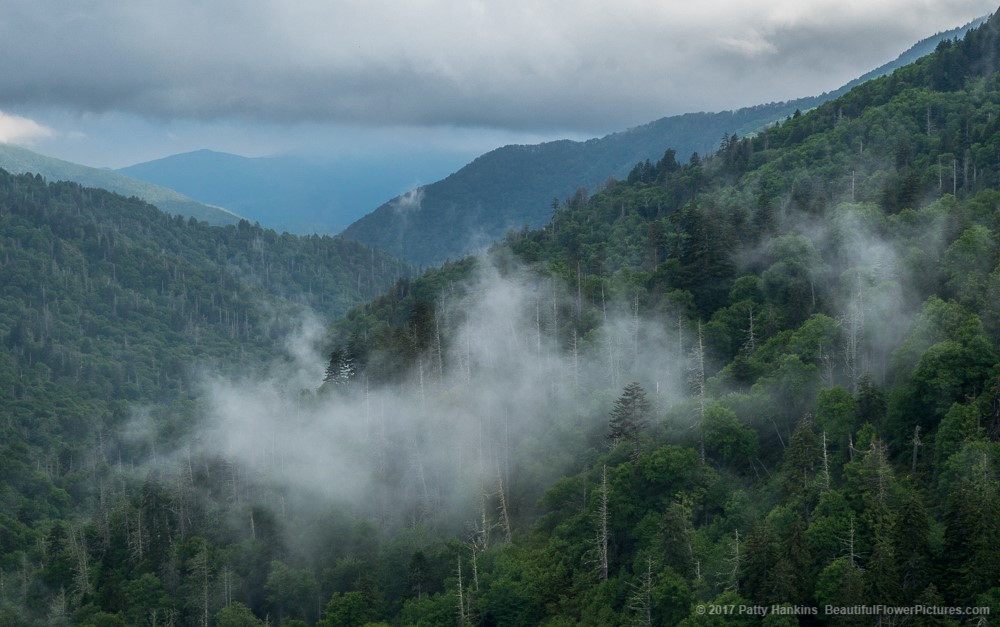
Mountains and Clouds in the Smokies © 2017 Patty Hankins

Mountains and Clouds in the PIsgah National Forest ©2017 Patty Hankins
This last photo is actually a fully edited photo – it is available for sale on my website at http://beautifulflowerpictures.com/store/newfound-gap-great-smoky-mountains-national-park/
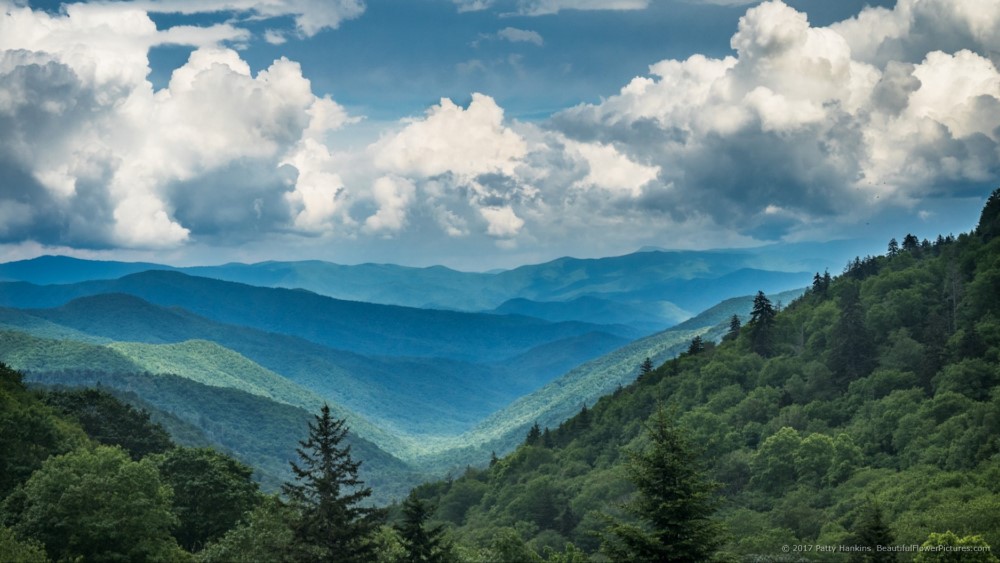
Newfound Gap, Great Smoky Mountains National Park © 2017 Patty Hankins
I’m planning on editing up a few more of these and offering them for sale in the coming months. If there is one you particularly like, let me know and I’ll let you know if it becomes available.
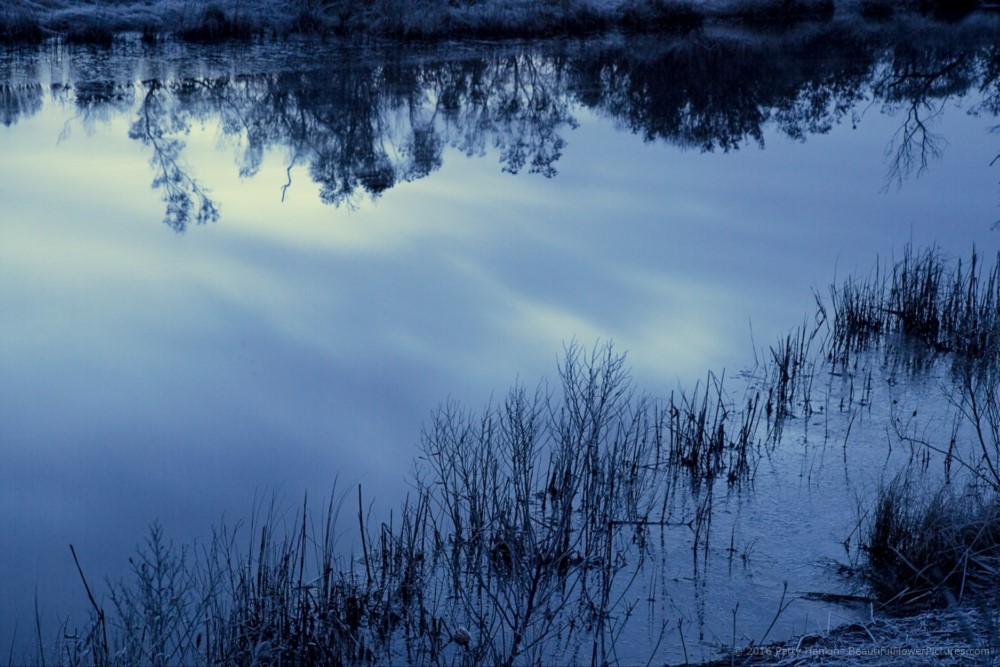
by hankinslawrenceimages | Jun 19, 2016 | New Photos, Virginia

Chincoteague Sunrise Reflections © 2016 Patty Hankins
I’ve recently added a new photo – Chincoteague Sunrise Reflections – to the shop on my BeautifulFlowerPictures.com website.
I love visiting Chincoteague National Wildlife Refuge and the Assateague National Seashore – especially during the winter. I’ve photographed sunrise from several different locations in the parks. In 2016, I had to find a new spot to photograph sunrise since the beach was being rebuilt after the winter storms. I ended up photographing in one of the channels alongside the road. What caught my eye was how the blue sky and white clouds looked on the water and ice in the channel. I included the relections of the plants along the shore to give a sense of place to the photo.
Chincoteague Sunrise Reflections is available as a matted print on my website.
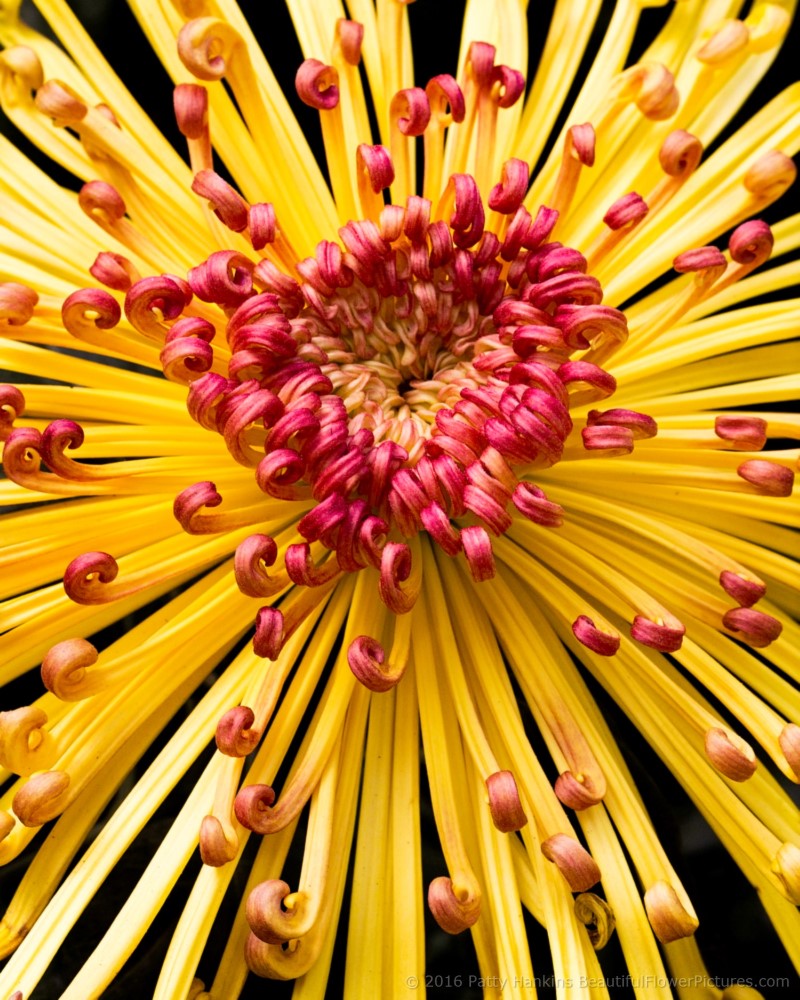
by hankinslawrenceimages | Jun 1, 2016 | Asteraceae Family, Flowers, New Photos, Rosaceae Family, Virginia
I wanted you to be the first to hear that I’ve added three new photos to my website. I’ll be blogging about them in the weeks to come – but in the meantime – here they are if you’d like to take a look.

Chincoteague Sunrise Reflections © 2016 Patty Hankins
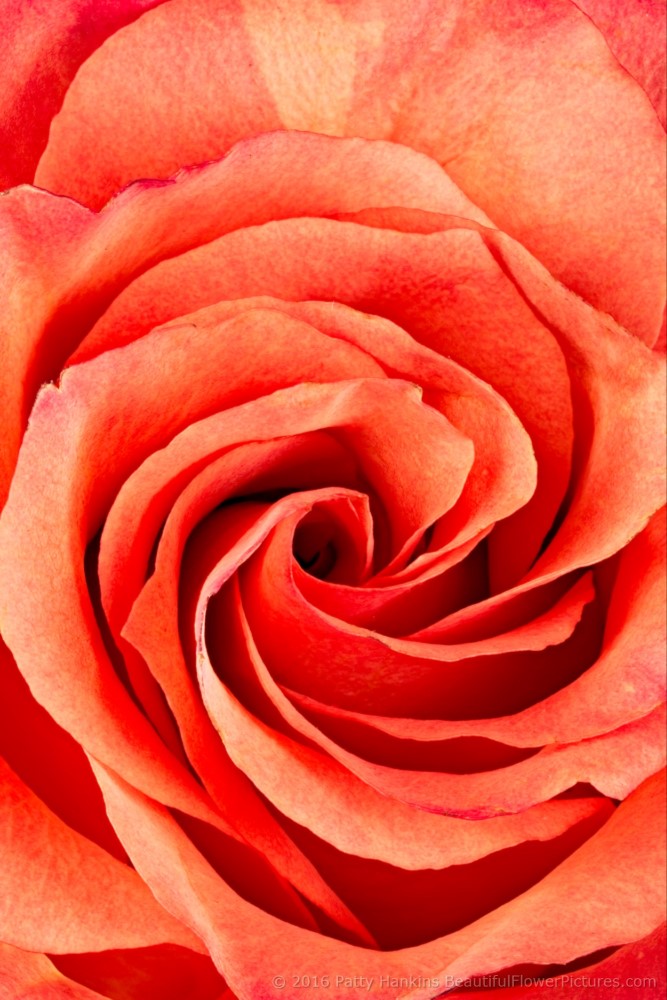
Jalah Rose © 2016 Patty Hankins

Lava Chrysanthemum © 2016 Patty Hankins
And don’t forget I’ve brought back several of my older iris and tulip photos for a limited time. These returning favorites will be available until June 30. After that – they won’t be available again until next year when the tulips and irises are blooming.
I hope you’ve enjoyed seeing my latest photos.
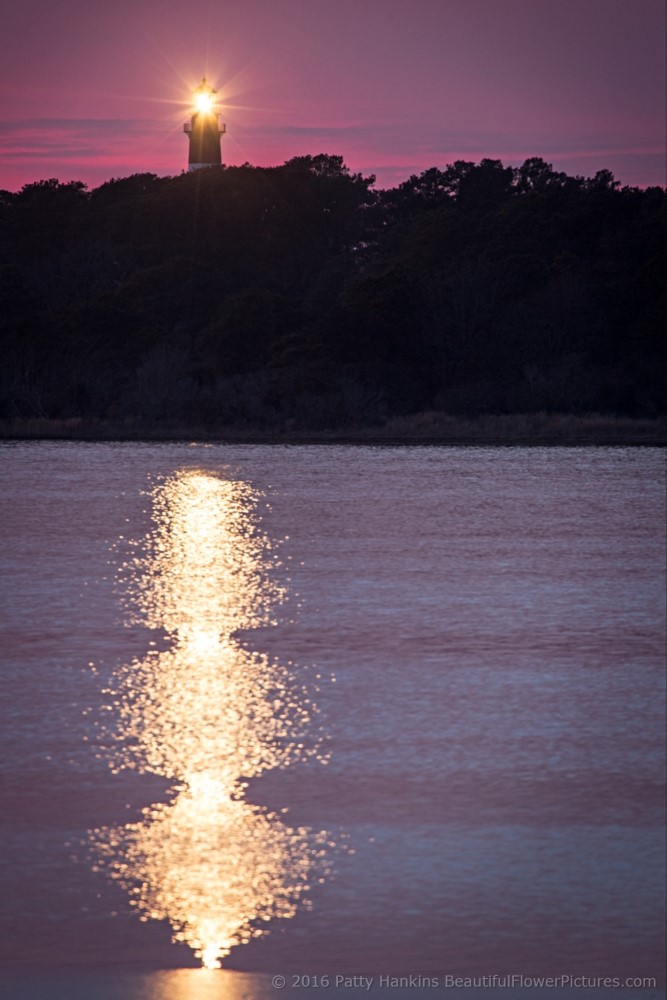
by hankinslawrenceimages | May 8, 2016 | New Photos, Virginia

Sunset at Assateague Light © 2016 Patty Hankins
I’ve recently added a new photo – Sunset at Assateague Light – to the shop on my BeautifulFlowerPictures.com website.
I love visiting Chincoteague National Wildlife Refuge and the Assateague National Seashore – especially during the winter. I’ve photographed sunset from the Wildlife Drive several times. In 2015, I photographed one of the most amazing sunsets I’ve ever seen – the sky was filled with incredible shades of pink and purple. At one point, I looked over at the Assateague Light – and saw how beautifully it was silhouetted against the sky – and how the light was reflecting across the water. So of course I had to photograph it. Seeing the light like this reminds me of how important lighthouses were to ships in the years before GPS and other navigation systems – they truly provided people with landmarks to help them navigate – and warnings for when they were too close to shore.
Sunset at Assateague Light is available as a matted print on my website.
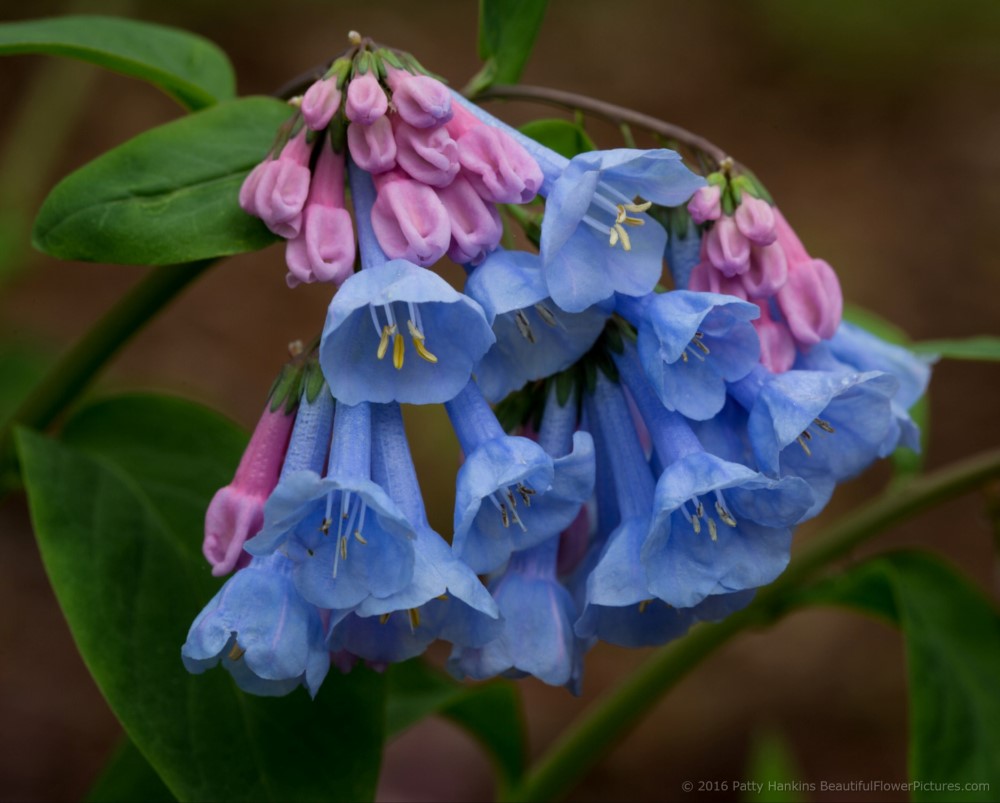
by hankinslawrenceimages | Jan 27, 2016 | Boraginaceae Family, Colorado, Flowers, Tennessee, Virginia, Wildflowers
Continuing with my efforts to edit and share some of the photos in the backlog on my hard drive – I thought I’d share some photos of native plants that are members of the Boraginaceae (Borage or Forget Me Not) family. Members of the borage family are known for their alternating leaves, many of which are hairy. The flowers usually have five lobes and are tubular shape.
Virginia Bluebells (mertensia virginica) are the member of this family that I photograph most frequently. I know several places here in the DC area where they bloom each spring. Last year, I found some wonderful Virginia Bluebells at Lewis Ginter Botanical Garden in Richmond to photograph.
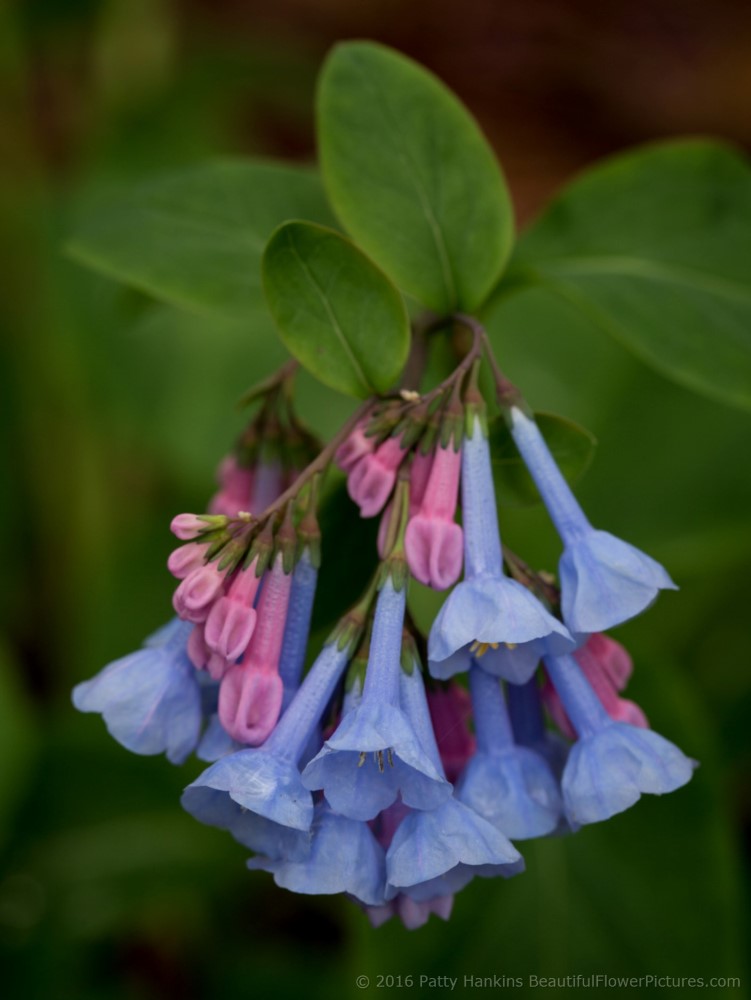
Virginia Bluebells – mertensia virginica © 2016 Patty Hankins

Virginia Bluebells – mertensia virginica © 2016 Patty Hankins
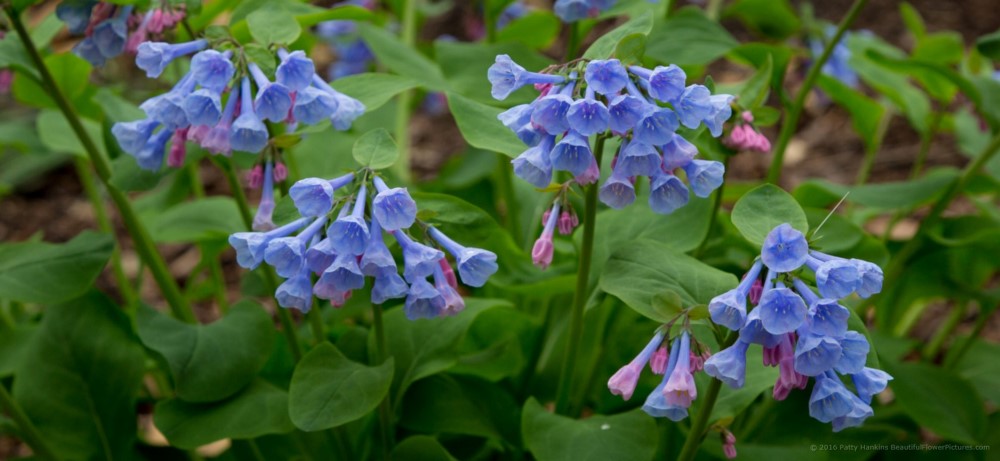
Virginia Bluebells – mertensia virginica © 2016 Patty Hankins
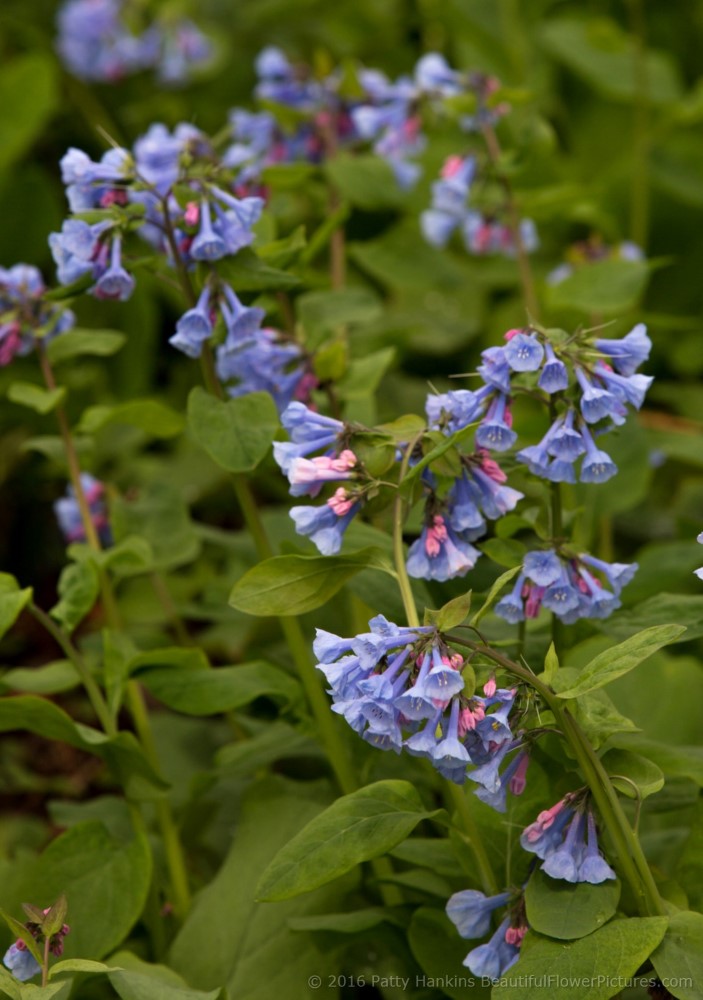
Virginia Bluebells – mertensia virginica © 2016 Patty Hankins
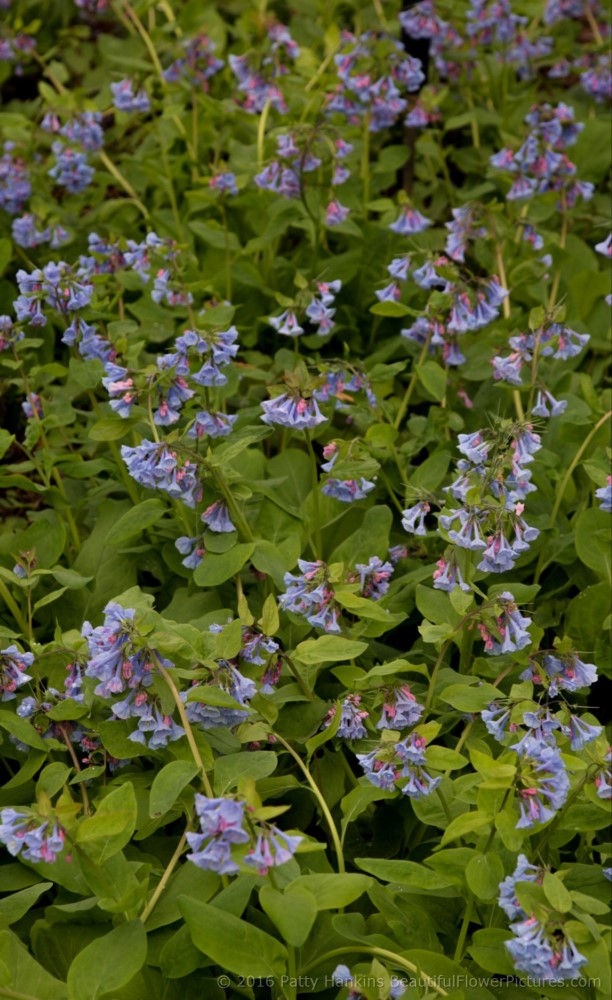
Virginia Bluebells – mertensia virginica © 2016 Patty Hankins
Purple Phacelia (phacelia bipinnatifida) is one of the wildflowers I see every spring in the Great Smoky Mountains National Park. If you’re in the park at the right time of year it can seem as if the roadways are lined with purple phacelia.
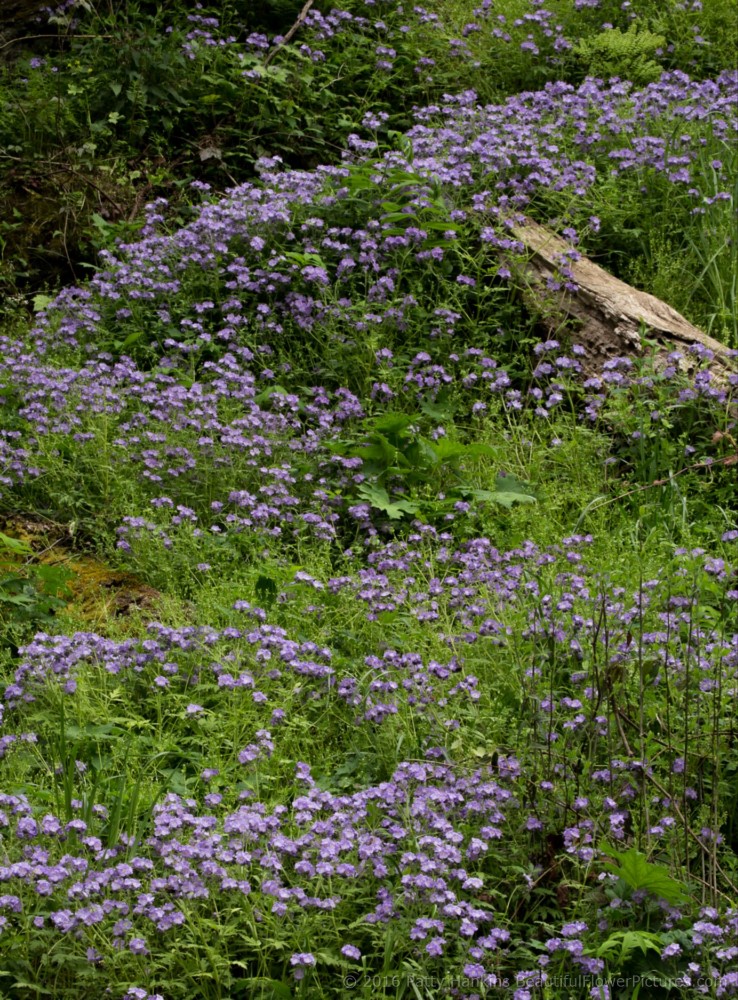
Purple Phacelia – phacelia bipinnatifida © 2016 Patty Hankins
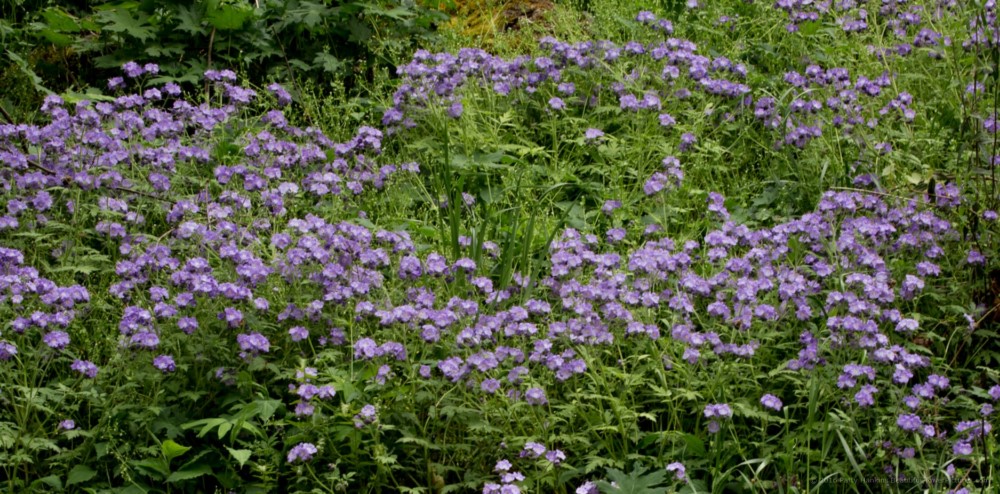
Purple Phacelia – phacelia bipinnatifida © 2016 Patty Hankins
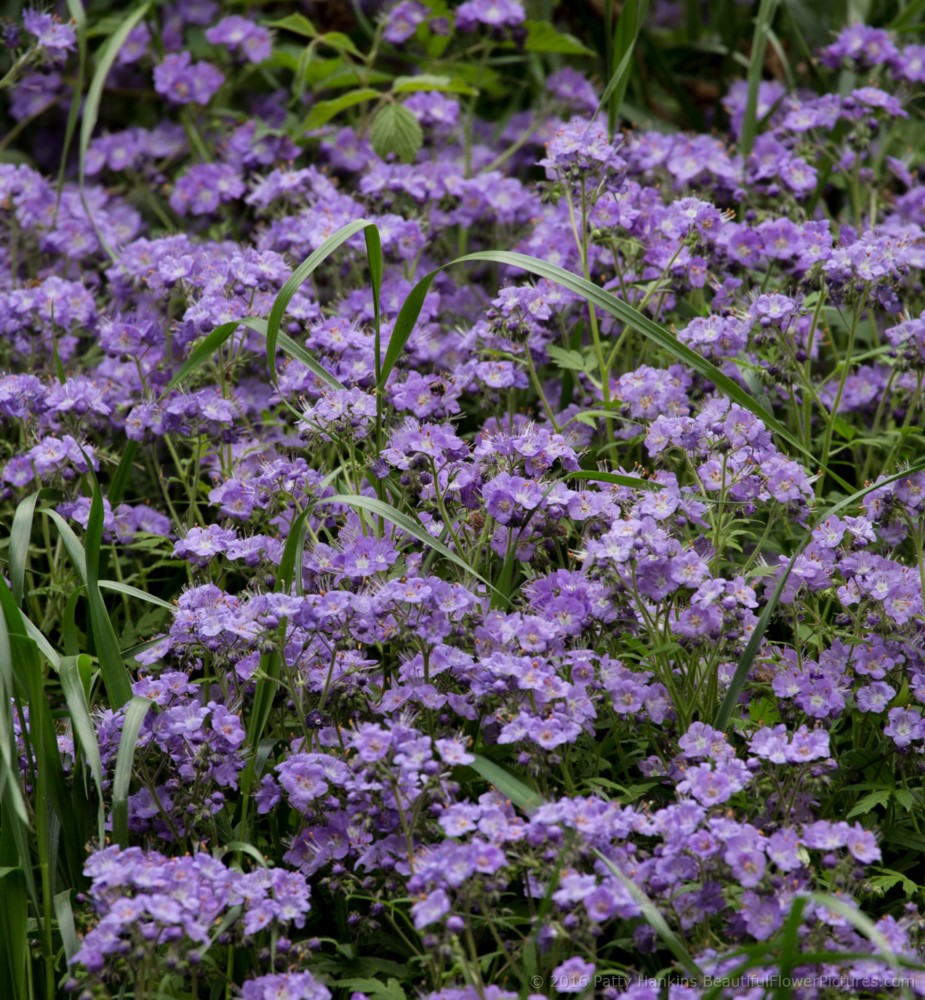
Purple Phacelia – phacelia bipinnatifida © 2016 Patty Hankins
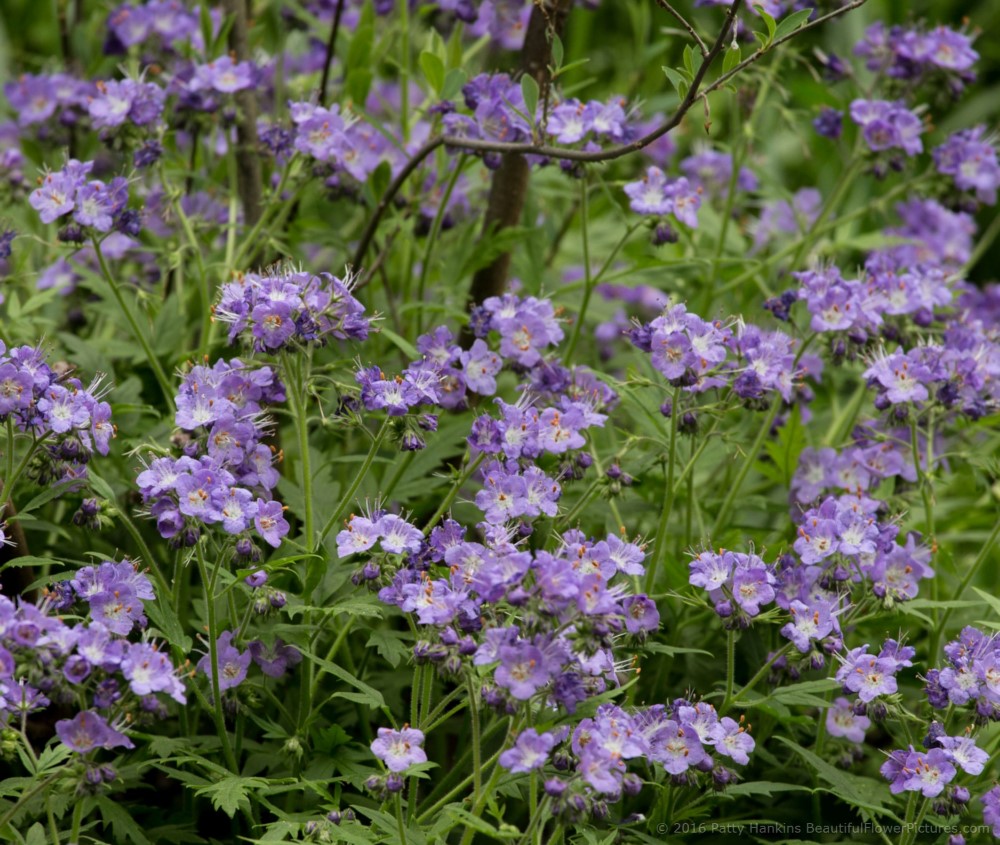
Purple Phacelia – phacelia bipinnatifida © 2016 Patty Hankins
I photographed some Tall Fringed Bluebells (mertensia ciliata) in the Gunnison National Forest in Colorado a few years ago. When I spotted them I knew they were a type of bluebell since they looked so similar to the Virginia Bluebells – just wasn’t sure what type.
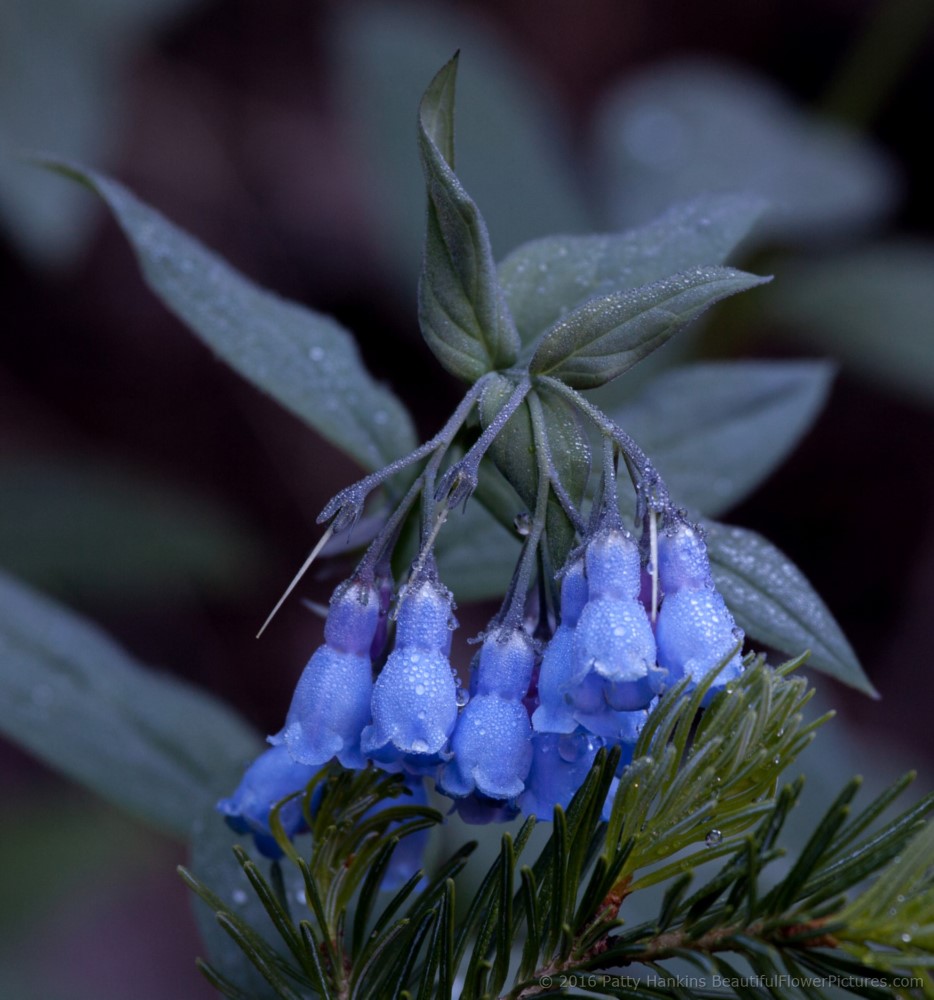
Tall Fringed Bluebells – mertensia ciliata © 2016 Patty Hankins
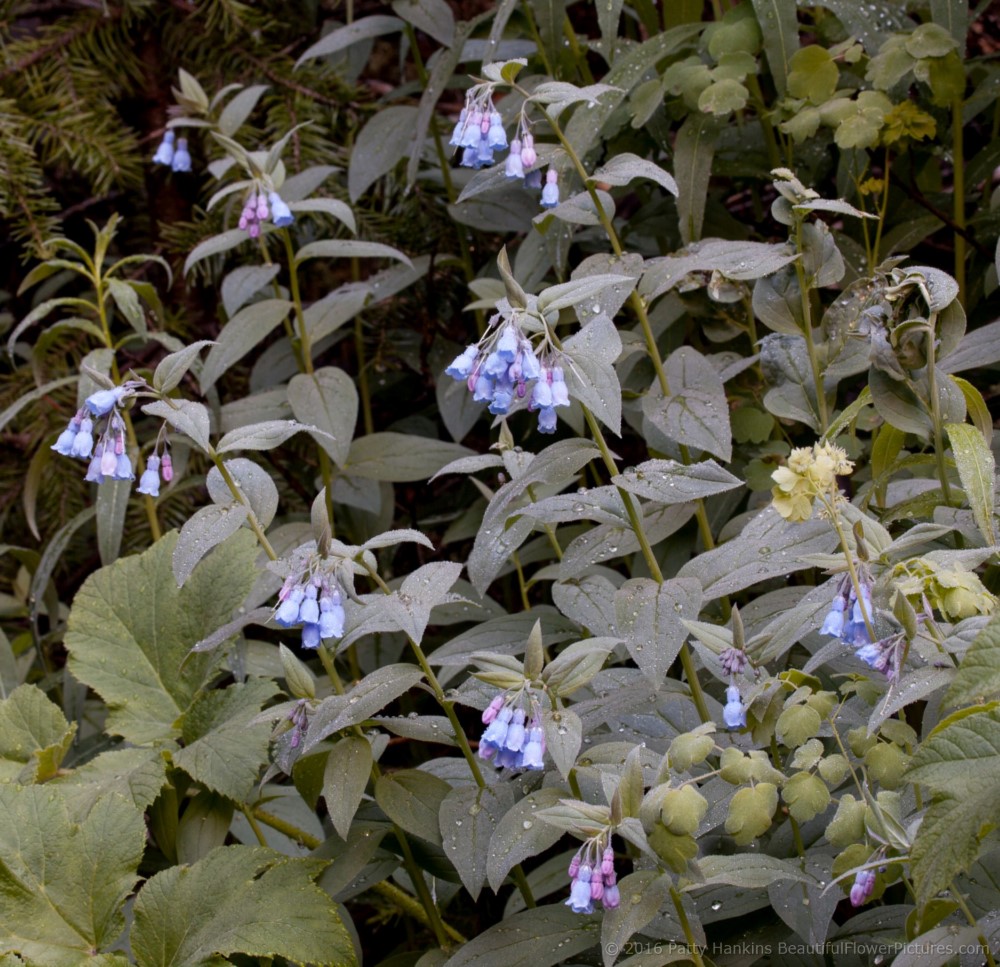
Tall Fringed Bluebells – mertensia ciliata © 2016 Patty Hankins
That same afternoon in the Gunnison National Forest, I found a single False Forget Me Not (hackelia floribunda) plant with a few blossoms.
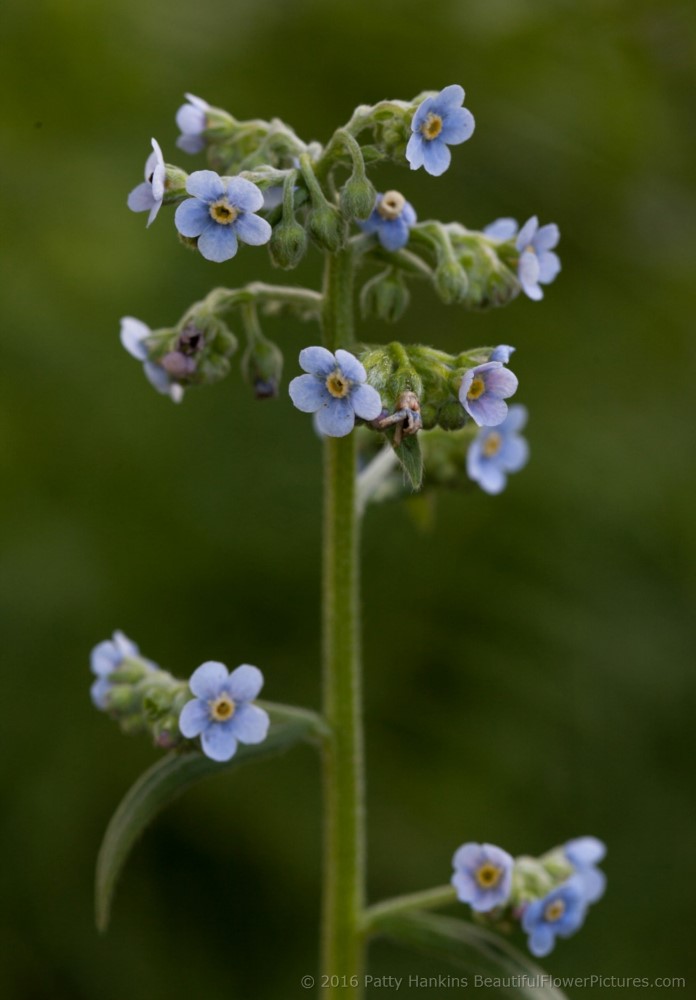
False Forget Me Not – hackelia floribunda © 2016 Patty Hankins
I hope you’ve enjoyed seeing some of my photos of members of borage family. I’m always on the lookout for new-to-me wildflowers – who knows – perhaps I’ll find another member of the borage family this year.
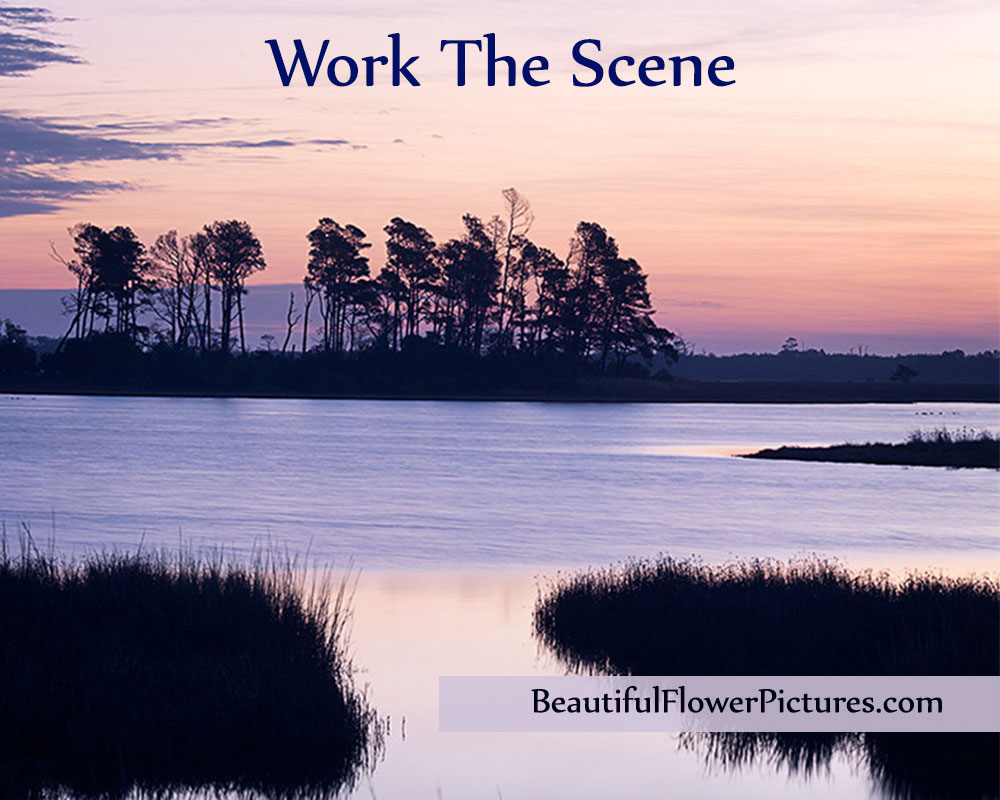
by hankinslawrenceimages | Jan 15, 2016 | Photo Tips, Virginia
Have you ever stopped to photograph a great scene, and then when you get home realize that you would have had the perfect shot, if only you had gone wider, gotten in closer, been 3 feet to the left, etc? One of Bill’s and my major recommendations to our students is that when you see that scene that catches your eye, and you decide you must photograph it, is that you work the scene.
What does this mean? When we approach a scene, often a shot will come to mind, and we set up and take that particular photograph. But once that is out of your system, stop and take a look at the scene with an eye towards what other shots you can compose. How do you do this? The first thing is to take a moment and look, with an eye towards what different compositions you can see. You can try several things that will help you think of different photos:
- Try different focal lengths. If you’re looking through a telephoto lens, you will get very different compositions then when you are using a wide angle lens. We often start with a wide angle lens, then use a telephoto to pick out some of the more interesting details in the scene.
- Try portrait and landscape compositions. The change from horizontal to vertical orientation of your camera will force you to include and exclude different parts of the scene, and will help you to think about the scene in different ways.
- Move around and try again. Typically, when we are happy with a shoot in one spot, we’ll pick up the tripod (you are using a tripod, aren’t you?) and walk around to look at the scene from different angles. This keeps you from being stuck in one set of “tripod holes” never moving from one place. Walk ten feet/ a hundred feet/ a hundred yards (depending on your circumstances – you’d be amazed what a difference 10 feet can make in getting components of your scene to line up) and see if you like what you see. Set your tripod again and start seeing what shots look better from the new angle.
Please note that we regard working the scene as different from “machine gunning”, or indiscriminately keeping your camera shooting without giving thought to what you are shooting. You still need to think about your composition, but any scene has more than one good composition in it (we’ve learned this extremely well – put the two of us in the same place with the same gear, and you will get very different compositions).
Here are some of Bill’s photos from a sunrise in the marsh at Chincoteague National Wildlife Refuge.
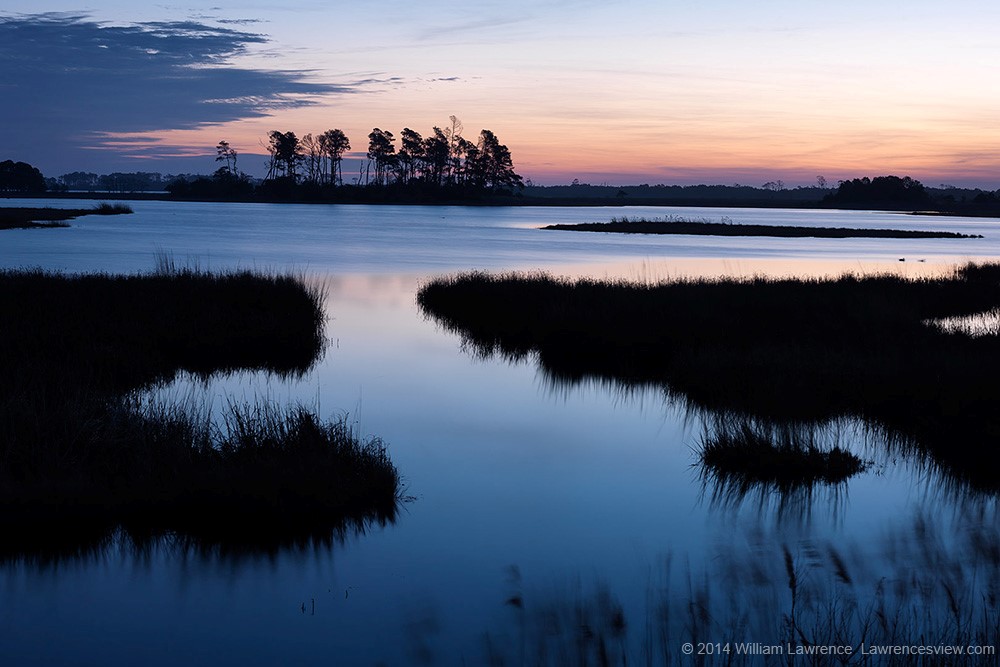
Sunrise at Chincoteague National Wildlife Refuge © 2014 William Lawrence
What attracted Bill’s attention to the original scene was the lovely light silhouetting the trees in the background, with the light reflected by the water in the foreground. In walking the scene before placing his tripod on the ground, he decided that the ideal place was where the channel of water in the foreground made a leading line into the scene (and you’ll see that he kept that concept throughout). Throughout the shoot, he moved both camera right and camera left to try different compositions (not much here – probably 10-15 feet, so that he didn’t lose the channel in the foreground). Bill shot several portrait compositions with a longer lens, and even tried to consider what might look good in black and white (so looking for form and tone as opposed to color).
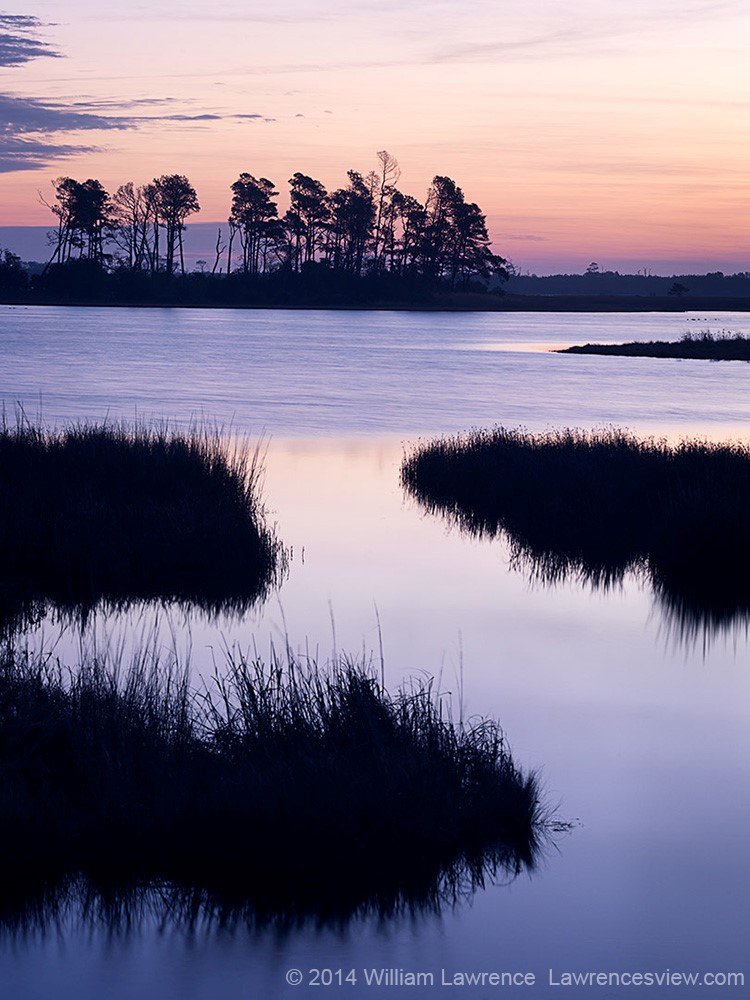
Sunrise at Chincoteague National Wildlife Refuge © 2014 William Lawrence
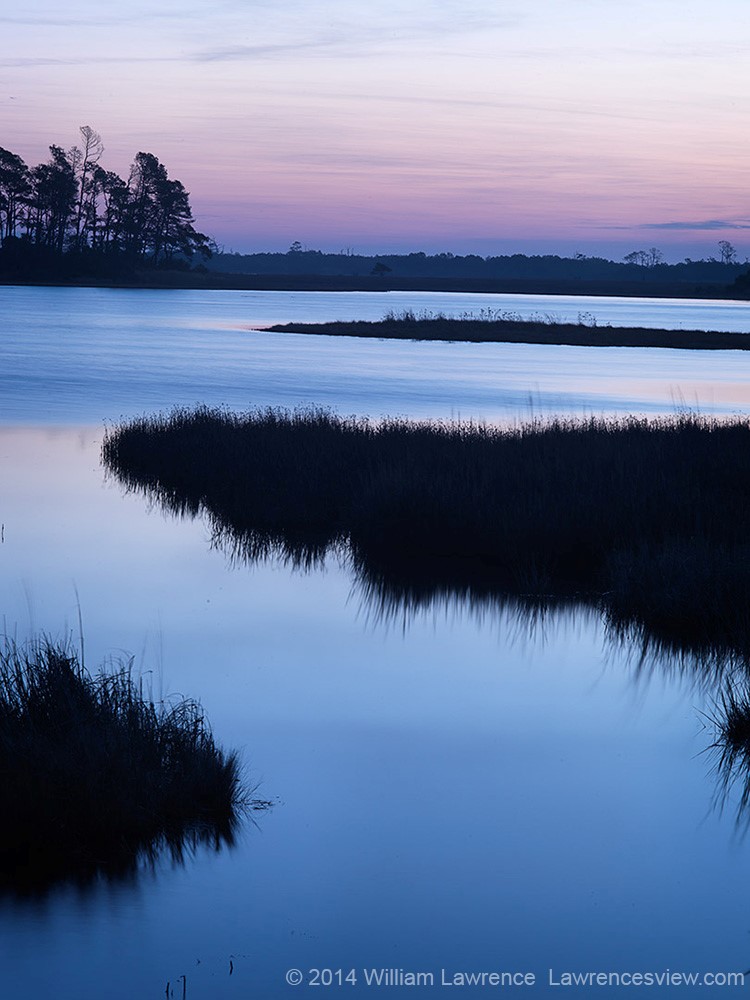
Sunrise at Chincoteague National Wildlife Refuge © 2014 William Lawrence
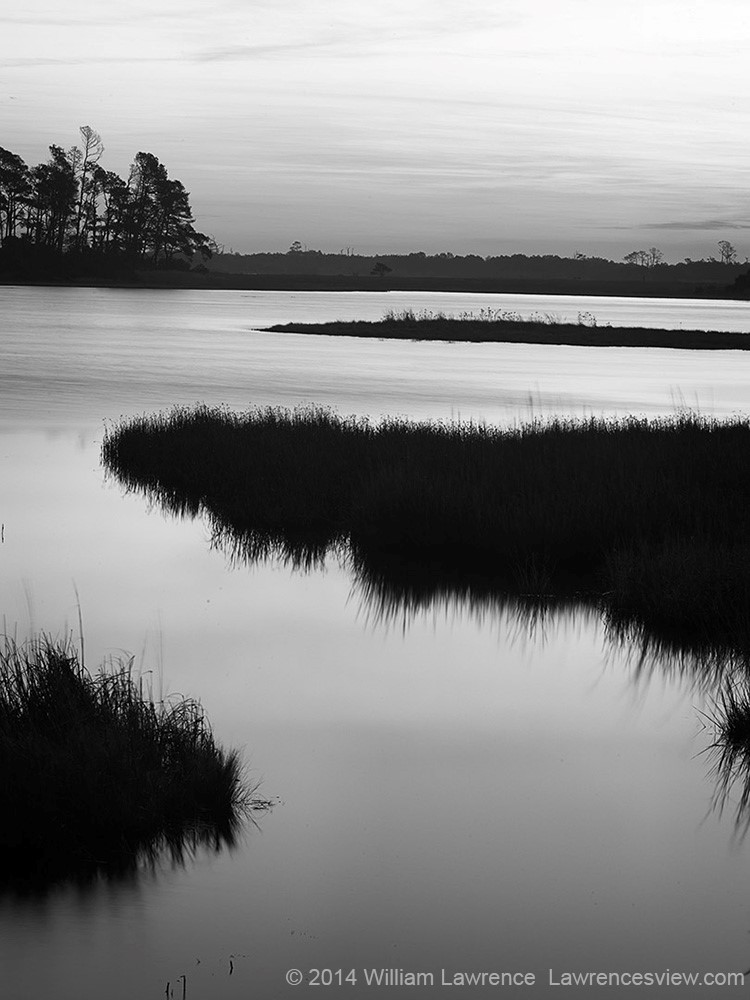
Sunrise at Chincoteague National Wildlife Refuge © 2014 William Lawrence
Finally, at a point when the light was interesting across the horizon, he put on a moderately wide lens and shot a diptych to give a panoramic view across the marsh.
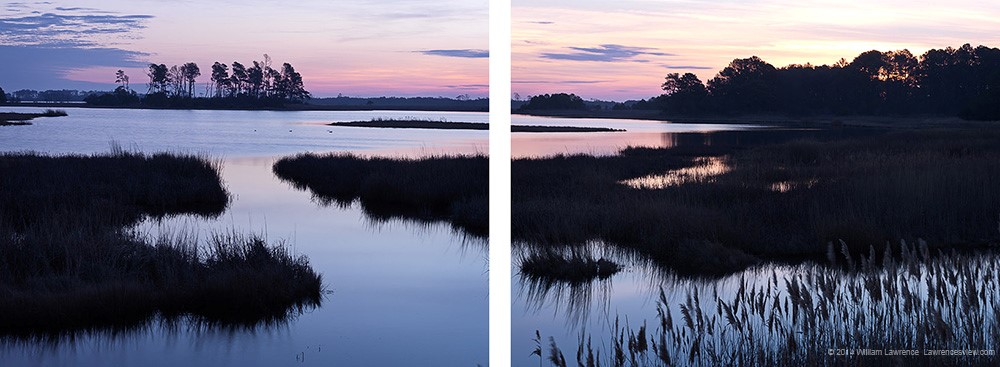
Sunrise at Chincoteague National Wildlife Refuge © 2014 William Lawrence
So, the next time you’re out photographing a wonderful scene, and you’ve got what you think is the perfect shot in camera, step back for a moment and ask yourself “what other ways could I be photographing this scene?” Try a different lens (or zoom in/out if you have a zoom lens)? Change the camera orientation? Go photograph it from over there? Particularly if you are traveling to photograph, you don’t want to wind up looking at your photos after the fact and saying “why didn’t I try (zooming in/zooming out/ moving left/etc)?” So make sure you work the scene while you are there.
If you found the idea of working the scene helpful, it’s one of the concepts Bill and I talk about our landscape photography workshops. Our next workshops are Winter’s Beauty at Chincoteague and Assaeteague on February 5-7, and Springtime in the South: Savannah, Charleston and the South Carolina Low Country on March 20-26. We’d love to have you join us for one of our workshops.




































